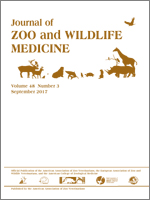Heavy metal contamination of the environment remains a critical issue. Lead and mercury exposure, particularly, can affect avian health. Bald eagles (Haliaeetus leucocephalus) ingest these metals through their diets. Lead and mercury prevalence were examined in bald eagles from three mid-Atlantic US states between 2004 and 2013. Blood samples were analyzed using atomic absorption spectrometry. Wilcoxon score tests were used to detect differences in lead and mercury over time. Counties of origin for birds with clinically significant metal levels were identified. There were no temporal trends found in lead and mercury prevalence. Eagles with clinically significant lead levels (>0.6 ppm) originated from near Chesapeake and Delaware bays, but most birds with clinically significant mercury levels (>1 ppm) originated from near Delaware and Barnegat bays. These findings indicate that lead and mercury contamination persists in this region and that routine sampling of bald eagles is a useful monitoring tool.
How to translate text using browser tools
1 September 2017
EVALUATION OF LEAD AND MERCURY PREVALENCE IN BALD EAGLES (HALIAEETUS LEUCOCEPHALUS) FROM THE MID-ATLANTIC UNITED STATES
Andreas Eleftheriou,
Lisa Murphy,
Sallie Welte
ACCESS THE FULL ARTICLE
Bald Eagle
Haliaeetus leucocephalus
Heavy metal contamination
lead
mercury
mid-Atlantic





